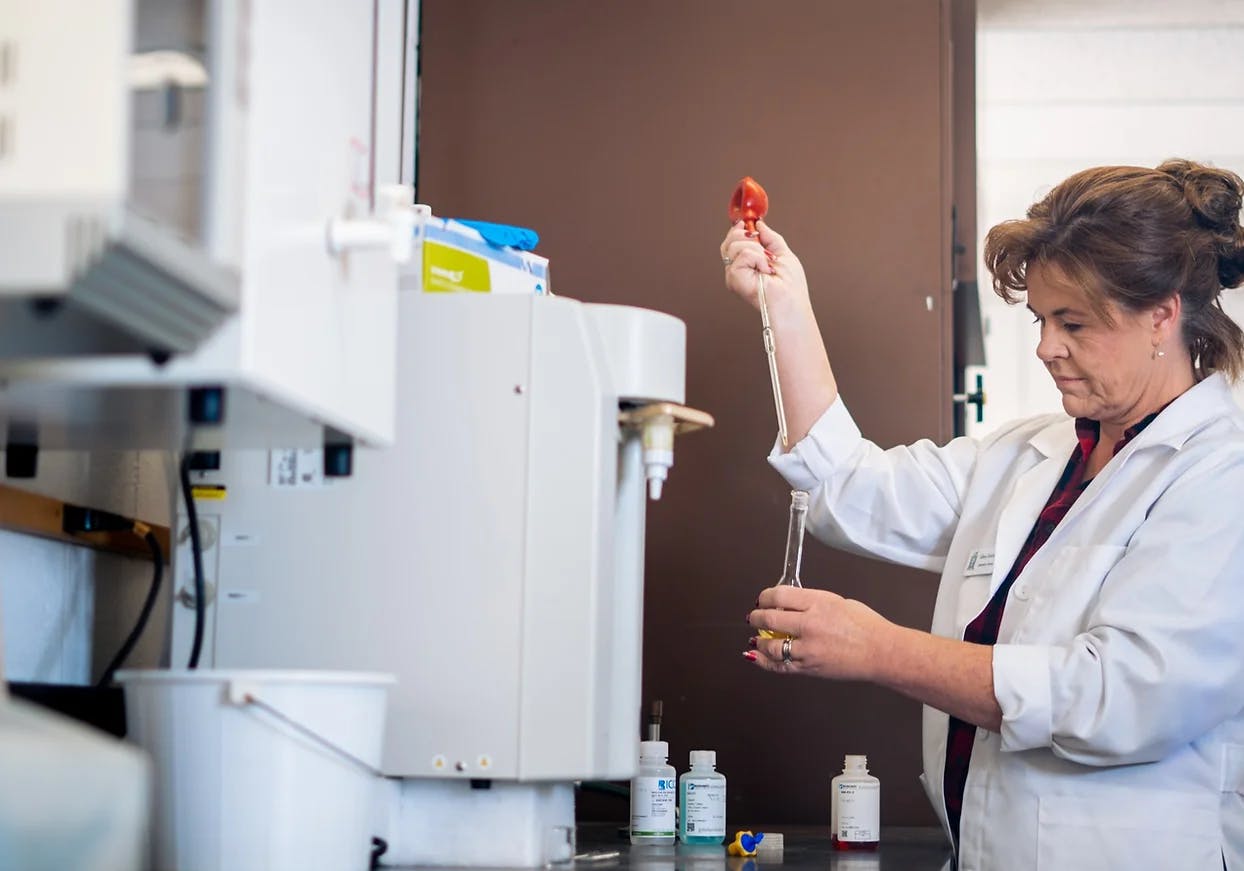Our Water

Treatment Process
Ute Water proudly operates a conventional water treatment facility with chemical flocculation, sedimentation, dual-media filtration, corrosion control, fluoridation and disinfection. There are multiple source waters available to Ute Water, but the preferred sources are the Jerry Creek Reservoirs on the Grand Mesa.
Aluminum sulfate and cationic polymer are added to the raw water for coagulation. Coagulated particles are allowed to settle out before going to the dual media filters. The filters effectively remove particulate.
Filtered water enters the clear well where caustic soda is added to increase pH for optimization of chloramination and corrosion control. Ammonia is added as water exits the clear well for chloramination. Throughout the treatment process, analyzers, level gauges, and other monitoring equipment are in place to continuously monitor and alert personnel of changing conditions. Finished water is then introduced to the distribution system.
Current Water Quality Dashboard
The Water Quality Dashboard is a snapshot of the District's water quality each week. The dashboard is updated each Friday before 5:00 p.m. and the information is reflective of the previous week's water quality.
| Alkalinity | 70 mg/L | Alkalinity is water's capacity to neutralize acid. |
|---|---|---|
| Chloramine | 1.97 mg/L | Monochloramine, more commonly referred to as chloramines, is a chlorine disinfectant used to treat drinking water which provides long-lasting disinfection as the water moves through pipes to consumers. |
| Fluoride | 0.73 mg/L | The mineral Fluoride occurs naturally on earth and is released from rocks into the soil, water, and air. Fluoride has been proven to protect teeth from decay. |
| Hardness | 72 mg/L | Hardness is a measurement of the mineral content in a water sample that is irreversible by boiling. |
| pH | 8.40 | pH is a measurement of electrically charged particles in a substance. It indicates how acidic or alkaline (basic) a substance is. |
| Turbidity | 0.04 ntu | Turbidity is a measure of the cloudiness of water. |
Frequently Asked Questions
Total hardness is a measurement of the mineral content in a water sample that is irreversible by boiling. More specifically, total hardness is determined by the concentration of multivalent cations in water. The most common cations present in hard water are Mg2+ and Ca+.
Hardness in water is usually observed by its ability to form scale and make suds with soaps and detergents. It is commonly found as water spots on dishes and cars or a white build-up on swamp cooler pads.
General guidelines for classification of waters are: 0 to 60 mg/L (milligrams per liter) as calcium carbonate is classified as soft; 61 to 120 mg/L as moderately hard; 121 to 180 mg/L as hard; and more than 180 mg/L as very hard.
To convert from mg/L to grains per gallon, divide by 17.1
Hardness in water is usually observed by its ability to form scale and make suds with soaps and detergents. It is commonly found as water spots on dishes and cars or a white build-up on swamp cooler pads.
As water evaporates, hardness as calcium carbonate is left behind. This is the white build-up you may see on your swamp cooler pads.
Cloudy water is likely caused by air bubbles trapped in the water. The water is safe to drink and consume. Letting the water sit in an open container will help the cloudiness dissipate.
Sometimes homeowners will find black particles floating in their water. These are likely coming from the plumbing inside your home. The three most common sources of the particles are old pipes deteriorating and corroding, corroding water heaters, or gaskets or washers breaking down.
If you are seeing pink rings in your toilet or sink, it is not a problem with water quality. It is likely the result of an airborne bacteria, known as Serratia Marcescens, that thrives in moist areas. The best way to eliminate the problem is to clean with a bleach-based cleaner.
It is recommended that customers use cold water and warm it in the microwave or on the stove top to cook or to prepare a baby's bottle. Even the best maintained hot water heaters could potentially introduce bacteria or debris that collects in the unit over time. Hot water systems like tanks and boilers contain metallic parts that corrode as time goes by, contaminating the water.
OUR ABSOLUTE TRUTH
Why do we want the best water around? Because it’s our water too. For 65 years, we’ve treated the snowmelt found on the Grand Mesa, and a few other sources to make it the freshest we can. That’s the absolute truth.
Because our founders knew a life with out clean water, we're committed to making sure you never do.
The process from capturing freshly fallen snowmelt from the Grand Mesa is one that makes the District unique and is admired by other water providers across the nation. The Grand Mesa, also recognized as the world's largest flattop mesa, is the primary watersheds for the District, and the gravity-fed system that delivers the pristine snowmelt to your tap is unique to the District.
Each drop of water that comes out of the tap has originated from the Grand Mesa and is brought to you by dedicated employees who helped capture, move, treat, and distribute the water to your home.
We don't make the water, but we make sure it gets to you and that's it's safe for you to consume, because Ute Water is our water too.
And that's our absolute truth.
